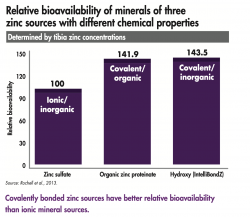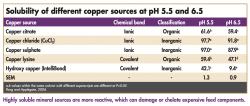Innovations in trace mineral nutrition, including organic and hydroxy trace minerals, help maximise animal health and productivity.
Mineral premixes can be formulated with a number of sources, each with advantages and disadvantages. Imprecision is still common, which is likely attributable to myths related to both trace mineral requirements and the trace mineral sources being fed. So, while comprising only a fraction of the diet composition an cost, debunking some of the myths pertaining to trace mineral nutrition can have immense importance in maximising animal health and productive performance in order to generate added profit for producers.
Myth 1
Trace mineral requirements are static
Trace mineral requirements for production animals have been investigated for close to 90 years. These efforts typically used healthy animals in high-health environments and resulted in the publication of static mineral requirements. However, “True” mineral requirements are not static. While most mineral requirement sources tend to factor in age, genetics and reproductive status, variability is common and likely related to source solubility, animal health and the presence of mineral antagonists. This is especially true under commercial growth conditions and today’s least cost formulation programs, where dietary mineral levels are often reduced to lower production costs.
It is critical to understand the advantages and disadvantages of each mineral source, dispelling common myths that classify minerals as simply inorganic and organic.
It is logical to hypothesise that mineral requirements temporarily increase when an animal is coping with environmental stress or health challenges. Additionally, feed intake tends to decrease, which reduces mineral intake, thereby compounding the challenge. Another common consequence of a challenge condition is an increase in oxygen free radicals. An animal’s ability to protect itself from free radicals is critically dependent on copper, zinc and manganese. If trace mineral intake is not able to meet the high demand imposed by the immune system, animal performance will be adversely affected.
In addition to the critical systemic effect on animal health, supplementing trace minerals at concentrations above previously established requirements can support gastrointestinal tract health. The average swine producer in the United States feeds over 10 times published trace mineral requirements to maximise health and performance. This brings into question the primary purpose of establishing trace mineral requirements. Are requirements established to maximise production performance or solely to avoid deficiencies in high health animals? Evidence provided by both modern research and commonly adopted feeding practices demonstrates that in order to maximise health and performance under commercial conditions, mineral requirements are likely higher than those previously established in high-health animals.
Myth 2
Oxide and sulphate trace mineral sources are well-suited for today’s animal nutrition
Traditionally, inorganic sources like oxides or soluble mineral salts like sulphates, have dominated the market. These sources were readily available commodities when mineral requirements were established, which provided an easy transition to their use in animal production.
Because these sources were not developed for animal feeding, some of their characteristics are not desirable. Metal oxides have inconsistent bio-availability due to their manufacturing process. Moreover, sulphate mineral sources tend to be highly soluble due to their ionic bonds. This leads to the rapid release of reactive metal ions when exposed to water in the feed or in the animal. The reactivity of these ions can damage expensive feed components like fat-soluble vitamins. Free metal ions can chelate and make unavailable other feed constituents like sulphur containing amino acids or phytate phosphorus. Phosphorous is one of the most expensive nutrients supplemented to animal diets and is required for proper growth and development.
Negative effects of feeding soluble mineral sources can be compounded when feeding concentrations above the requirement, limiting possible benefits of this strategy. Animals have adaptive mechanisms to cope with the rapid release of high concentrations of metal ions in the upper gastrointestinal tract. One series of mechanisms is to both down regulate metal transporters while simultaneously increasing the synthesis of mineral binding proteins to sequester the reactive metal ions. While necessary to protect the animal, mechanisms like this can negatively affect animal performance and increase mineral excretion into the environment.

Myth 3
Non-commodity trace mineral technologies are cost prohibitive
Due to their high reactivity, free metal ions are not typically found in animal tissues. Instead, they are almost exclusively bound to small chaperone proteins. In the 1980s, companies began developing trace mineral sources to mimic metal chaperones in direct response to the limitations of traditional inorganic sources. Organic sources tend to have stronger covalent bonds, which reduces solubility and protects the reactive mineral from antagonistic interactions in the feed and animal. The relative bio-availability of these mineral sources tends to be higher compared with the commodity in organic sources. However, because the production of organic minerals requires inorganic trace minerals and expensive protein feedstocks, the full replacement of sulphates or oxides remains cost prohibitive.
Not until the development of hydroxy trace minerals in the mid- 1990s did it become economically feasible for the full replacement of the soluble inorganic trace minerals. Hydroxy trace minerals have strong covalent bonds similar to organic sources but are manufactured from the combination of hydrochloric acid, water and a high-purity metal feedstock under carefully controlled production conditions to produce a stable three-dimensional “alpha” crystalline structure. This unique structure bestows additional benefits, including lower solubility than organic minerals while still having superior bio-availability to sulphates. Most importantly, the lower cost of substrates allows hydroxy trace minerals to be several times less expensive than organic mineral sources, finally allowing for the economical replacement of sulphates and oxides.

Avoiding the myths
Producers need to both avoid myths that animals have a relatively static mineral requirement and work with suppliers to better understand the trace mineral needs specific to their production system. Additionally, it is critical to understand the advantages and disadvantages of each mineral source, dispelling common myths that classify minerals as simply inorganic or organic. While organic minerals do have many benefits over the traditional inorganic sources, novel inorganic sources are now being marketed. Specifically, hydroxy trace mineral sources have the strong covalent bonds and lower solubility of organic mineral sources for a fraction of the cost.
Written by Kurt Perryman, Technical Sales Manager Micronutrients.
Source: Pig International. November/December 2017.

